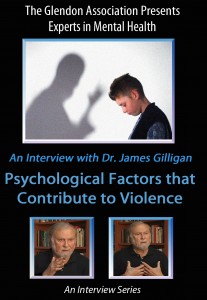The Beginning of the End of Mass Imprisonment and the Misuse of Prisons as Our De Facto Mental Health Care System

The U.S. Supreme Court’s decision in Brown v. Plata on May 23 ordering the state of California to reduce its prison population by more than 30,000 (from more than 140,000 to 110,000 inmates) over the next two years has received headlines, editorials and letters to the editor in newspapers around the country, as it should have. But since both the reasons for this decision, and its likely consequences, are easily misunderstood, and its historical implications are not widely appreciated, many fallacious comments about it are already widespread, both among the general public and even in the dissents penned by the four Supreme Court Justices who disagreed with the majority opinion. For that reason, as a psychiatrist with more than forty years’ experience in developing methods of violence prevention both in prisons and following the release of prisoners to the community, and whose testimony as an expert witness in this case was in agreement with what turned out to be the majority opinion of the Court, I would like to explain why this Supreme Court decision is a major, and very positive, historical event.
The main effect of this decision is to begin the process of undoing two of the most damaging and destructive mistakes that have been made in American life in the past half century, one in our criminal justice system, and the other in our mental health system. The mistake in our criminal justice system is the failed experiment in social engineering called “mass incarceration,” as a result of which the U.S. now has a higher rate of imprisonment than we have ever had before in our history, and more than any other country on earth, with rates ten times higher than any European country’s, and even higher than the most repressive police states, such as Iran, Syria, Russia and China. The mistake in our mental health system has been our failed “de-institutionalization” of the mentally ill in America, which would more appropriately be called “trans-institutionalization,” since a majority of the mentally ill have merely been transferred from the failed mental hospitals of the past into the even worse prisons of the present.
But let me first emphasize that the Supreme Court did not justify its decision on the ground that its purpose was to undo those two mistakes, which only legislatures can do. Rather, they ordered the state of California to reduce the overcrowding in its prisons because that was an urgent matter of life and death that violated the Constitution’s ban on “cruel and unusual punishment.” The severity and consequences of the overcrowding in California’s prisons had caused not merely a problem in living conditions; it had caused a problem in dying conditions. Even as the litigation was going on, solid documentation from the prisons showed that one California prisoner was dying every five to six days from preventable but untreated medical and psychiatric causes, and that the provision of adequate medical and mental health care was impossible when the prisons were so overcrowded that even the doctors’ offices and infirmaries had to be used as bedrooms. This failure to provide necessary medical care amounted to inflicting a de facto death penalty on each prisoner who died as a result.
Nevertheless, even though the express purpose of the Supreme Court’s decision was not to remedy the mistakes I summarized above, I think it is important to recognize that the effects and implications of this decision — its side-effects, if you will — could be to begin the process of correcting the historic errors to which I will devote the remainder of this article.
To deal with the criminal justice and penal systems first: During the first three quarters of the twentieth century the rate of imprisonment in the United States was essentially unchanged, at roughly 100 prisoners (plus or minus twenty) per 100,000 population. Beginning in the mid-1970s, after President Nixon declared wars on both “Crime” and “Drugs,” we began for the first time in our history escalating our incarceration rate uninterruptedly from year to year, so that we now have a rate of more than 700 per 100,000 population.
For the first three quarters of the twentieth century, before we began increasing the rate at which we put people into prison and kept them there, the rate of violent crime in our society increased and decreased from one time period to another, completely independently of the imprisonment rate.
For example, before we began the orgy of mass incarceration, murder rates in America increased to epidemic levels on two occasions, beginning in 1904 and 1921, and then decreased back to normal (endemic) levels without our making any changes in the incarceration rate.
Many people have had the mistaken impression that the era of “mass incarceration” that began after Nixon declared his “war on crime” was responsible for the ending of a third murder epidemic that began in 1970, Nixon’s second year in office, and did not end until 1997, Clinton’s fifth year in office (by which time the majority of new prisoners had for many years been men who had never committed a violent crime in their lives, let alone one as serious as murder). But even a cursory review of the relationship between imprisonment and murder will suffice to show that the theory that the increase in imprisonment led to the decrease in murder is contradicted by the facts. Let me explain.
In 1970, when our imprisonment rate was still about 100 per 100,000 Americans, exactly where it had been for the first three quarters of the century, our age-adjusted murder rate was 8.3. By 1985 our imprisonment rate had doubled, to about 200 per 100,000. What was our murder rate then? Still 8.3 per 100,000. By 1996 our imprisonment rate had doubled again, to about 400 per 100,000. What was our murder rate then? Absolutely unchanged, at 8.3 per 100,000.
In other words, the doubling and even re-doubling of our imprisonment rate did not make the slightest dent in our murder rate. As the National Academy of Sciences concluded in 1994, after reviewing the relationship between the imprisonment rate and the murder rate, these figures are inconsistent with the claim that increased imprisonment has any demonstrable effect in reducing the murder rate. In fact, as the Supreme Court commented in the majority opinion in Plata v. Brown, there is considerable evidence that the over-use and overcrowding of our prisons may do more to increase the rate of violence, both in our prisons and our communities, than to reduce it. For prisons have been known for centuries as “schools for crime” — I would call them “graduate schools.” And my own first-hand observations of prisons and prisoners over the past 40 years has convinced me that the most effective way to turn a non-violent man into a violent one is to send him to prison – which is exactly what we have been doing for the past 35 years.
Between 1993 and 2000 the murder rate in America underwent a sudden, steep and uninterrupted reduction from 10.5 per 100,000 to 6.4, which ended the murder epidemic from which we had been suffering since 1970. What changes in our society could have had such a dramatic and rapid effect on the murder rate? It was not the mass incarceration policy, since we had been following that approach since the mid-1970s with not a single year’s decrease below epidemic levels of 8 to 11. Beginning in 1993, however, Clinton’s first year in office, the murder rate for the first time since 1933 began a steep and uninterrupted year by year decline, beginning at 10.5 in 1993, falling below 8 by 1997, and bottoming out at 6.4 by 2000, his last year in office (following which, under Bush Jr., it began once again increasing).
To explain why this occurred, we need to know what changes in society have been shown to increase or decrease the murder rate. The three best-documented ones are these: the rate and duration of unemployment; the frequency, depth and duration of recessions and depressions; and the degree of social and economic inequality in income and wealth, i.e., the size of the gap between the rich and the poor, or in other words, the degree of relative poverty. Clearly, these three groups of socio-economic variables are closely related to each other, they tend to vary together and reinforce each other. When any one of them has increased, the U.S. murder rate has increased, and when any of them has decreased, the murder rate has decreased – from 1900, when the U.S. first began measuring death rates by cause each year, to 2007, the last year for which we have comparable data.
Thus we have an answer to our mystery. The murder rate reached the lowest level in thirty years by Clinton’s last years in office not because of mass incarceration, but because that is when the rate and duration of unemployment reached the lowest levels in thirty years; both minimum and median wages increased in real terms for the first time in thirty years; the “negative income tax,” the Earned Income Tax Credit, which many economists have cited as the most rapid and effective method of reducing poverty and inequality that we have yet invented, was much increased by Clinton, who defeated Republican efforts to abolish it entirely; the nation experienced the longest uninterrupted economic expansion in its history, with not a single month of recession; and the percentage of families in the demographic groups most vulnerable to homicide (African-Americans and Latinos) whose incomes were below the poverty line reached the lowest level since those figures first began being measured .
In other words, if we want to be safe from the most serious forms of violent crime, mass imprisonment is unnecessary, ineffective and a huge waste of taxpayers’ money, not to mention that it threatens to turn us into a police state rather than the “land of the free” that we like to advertise ourselves as to the rest of the world. And to the extent that it has any effect at all on murder rates, that may only be to increase and prolong the epidemics of murder by subjecting the millions of men who are sent to prison (90 per cent of whom will return to the community within a few years) to the most powerful causes of violence, namely, the humiliation, degradation and brutalization to which prison life exposes them.
If mass imprisonment is so ineffective and even counter-productive as a means of reducing the level of violence in our society (which is ostensibly its main purpose), why did we institute it? And why only in the mid-1970s? The answers are distressingly clear. It was not because our murder rate had increased to unprecedented heights. Our murder rate had been as high or higher than it was in 1970 (8.3 per 100,000) during almost every year between 1904 and 1935, and yet we did not increase our imprisonment rate during those years, and in fact brought the murder rate down again to sub-epidemic levels every time we improved economic equality and well-being — as we did during the administrations of Woodrow Wilson and Franklin Roosevelt. So an elevated murder rate is neither necessary nor sufficient to bring about an elevated imprisonment rate, and an elevated imprisonment rate is neither necessary nor sufficient to bring about a decline in the murder rate.
The same is true of the serious “index” crimes in general. Mass incarceration is not the result of, or a response to, an increase in violent crime, for such crimes had increased before 1975 without eliciting any increase in imprisonment, and had decreased without any need for increased imprisonment. But what is true is that the rate of incarceration per crime increased. During the last quarter of the twentieth century the rate of incarceration per crime in state and federal prisons increased five-fold, from 21 per 10,000 index crimes in 1975 to 105 in 1999. In other words, the penal system became five times as punitive, even when we hold the crime rate constant.
So what was unique about 1970-71, when the “wars” on crime and drugs were declared, was not an unprecedented spike in the murder rate. What was unique about it was that this was the era in which the Republican party realized that there was a “white backlash” against the most far-reaching civil rights bills (of 1964 and 1965) since the constitutional amendments that ended slavery after the Civil War, and that they could benefit from that politically if they could find some way to diminish the degree of racial equality those bills promised, and re-institute white supremacy. As Loic Wacquant, a sociologist at the University of California, Berkeley, has pointed out, this was hardly a new development in the history of American racism. After the Civil War and its aftermath ended slavery, the South re-instituted racial hierarchy and white supremacy by means of a whole series of tactics: poll taxes and “literacy tests” to limit the black vote; tenant-farming systems, to limit black land-ownership and economic equality; “Jim Crow” laws and segregation to end any possibility of social equality; segregated schools, to end any possibility of educational equality; and regular lynching “parties” — and they were parties, celebrated with picnics by whole families, including young children, who sent postcards with photographs of the murders to their friends and relatives – in which blacks were tortured, castrated, burned alive and hanged, with the full knowledge and collusion of local “law enforcement” authorities, in order to terrorize the black population into abandoning any hope of equality with whites.
I mention these distasteful details in order to remind you that it would be almost impossible to exaggerate the emotional power of racism in American history. As the Civil War demonstrated, white southerners by the millions were so driven by this fever that they did not hesitate to kill as many Yankees as possible, and even to sacrifice their own lives by the hundreds of thousands in their zeal to defend slavery and white supremacy. By the late 1950s racists in the South and the North, from governors and sheriffs and policemen to ordinary citizens, were still so blinded by race hatred that they risked the death penalty and life imprisonment in order to terrorize and kill as many black children and civil rights workers as possible. For millions of Americans, racial prejudice was not just an “attitude,” it was a holy cause that they valued more than their own lives or those of others, both of which they were more than willing to sacrifice in that cause. To speak of this as a kind of “mass psychosis” is hardly an exaggeration.
The modern Democratic party first began fighting against these forms of racial discrimination when President Truman integrated the armed services in the late 1940s. This prompted the beginning of a renewed white backlash against racial equality, leading the Southern Democratic Senator Strom Thurmond to leave that party and form a third one, the “Dixiecrat” party, and run for president against Truman, in an attempt to prevent him from gaining the white southern Democratic vote. (Thurmond, like virtually the entire southern congressional delegation, which had been uniformly Democratic ever since the South lost the Civil War to a Republican president, eventually became a Republican, in reaction against the modern Democratic party’s support of racial equality.)
The racists failed to defeat Truman, however, and suffered another defeat when the U.S. Supreme Court unanimously agreed on the 1954 de-segregation decision, Brown v. Board of Education (which was enforced, to his credit, by a Republican president, Eisenhower, and indeed was written by a Republican former governor of California, Earl Warren, who had been appointed Chief Justice by Eisenhower). But the last straw, for white supremacists, appeared to be Lyndon Johnson’s two landmark Civil Rights bills of 1964 and 1965 that outlawed segregation and guaranteed equal voting rights for blacks. This stimulated even more of a white backlash from politicians like George Wallace and Barry Goldwater, and in 1966 the Republicans made huge electoral gains in Congress and in governorships and state legislatures throughout the country (on such a large scale that some analysts described that election as the end of Johnson’s presidency). And in fact the Republicans, and the remaining Southern Democrats, were able to prevent any significant civil rights legislation from that time on.
When Nixon ran for President in 1968, he succeeded quite consciously in exploiting the anti-black (and hence anti-Democratic) sentiment in the country by means of coded language: as everyone knew, the “War on Crime” and the “War on Drugs,” on which he campaigned and which he and his political allies throughout the country succeeded in turning into law after his election, were code words for “War on Blacks” (and, I should add, for “War on the Poor” generally, including poor whites — although blacks, being even poorer and less powerful than poor whites, were actually the most deeply injured by these political strategies). And it was those “Wars” that led directly to the era of mass incarceration, as the only way to re-institute white supremacy after the previous ones — slavery, lynching, segregation, poll taxes, etc. — had been declared illegal.
Many facts about the history of mass incarceration are consistent with that interpretation. First, the proportion of blacks admitted to our state and federal prisons has nearly doubled since the incarceration rate began increasing from the mid-1970s on. For the first time in our history, more than half of the men being sent to our prisons are blacks, even though black men make up less than seven per cent of our adult population. In fact, the ethnic composition of our prisons has exactly reversed itself, from 70 percent white at mid-century to 70 percent black and Latino in 2000, even though there has not been any fundamental change in the patterns of criminal activity among those different ethnic groups.
Second, as the American Civil Liberties Union pointed out earlier this month, “despite the fact that whites engage in drug offenses at a higher rate than African-Americans, African-Americans are incarcerated for drug offenses at a rate that is 10 times greater than that of whites. …The racial disparities are staggering.” Since non-violent violations of the drug laws are the main “crimes” for which most people have been imprisoned for the past few decades, this clearly contributes to the disproportionate imprisonment of blacks.
Third, now that poll taxes, literacy tests and other means of disenfranchising blacks have been prevented by civil rights laws, the mass incarceration of blacks has made it possible for many states to deprive them of the right to vote, often for life, on the grounds that they are now convicted felons (even when the so-called “felony” is a non-violent and victimless violation of the drug laws, as it most often is) and that felons should not be allowed to vote. The result is that in any given year one black man in every seven is prevented from voting. Counting blacks and poor whites together, nearly four million Americans are legally forbidden to vote. Since blacks and the poor vote overwhelmingly more frequently for Democrats, it is clear which party benefits from this strategy.
Fourth, since a prison inmate cannot work at a job, and a former inmate often cannot find a job, the mass incarceration of blacks removes millions of blacks as potential competitors with whites for the jobs that are increasingly scarce for the members of both ethnic groups.
These are among the reasons that I agree with the many prominent social scientists, such as Loic Wacquant of Berkeley and Michelle Alexander of Ohio State (author of The New Jim Crow: Mass Imprisonment), that the main political function and purpose, and the only obvious reason, for the introduction of mass incarceration since the mid-1970s has to been to re-institute white supremacy, in a white (and Republican-supported) backlash against the success of the civil rights movement of the 1950s and ’60s.
Many political scientists and historians have commented that the political transformation of the Southern states from Democratic to Republican was the most important political change in American politics in the twentieth century. It certainly was the main change that made it possible for Republican presidents to terminate the New Deal Consensus which since Roosevelt’s election in 1932 had kept Democrats in the White House for the next twenty years, and indeed for 28 of the next 36 years (1932-1968), and led to the most bi-partisan period in American political history. Even the one Republican president during that era, Eisenhower, supported the New Deal, with major expansions of social security and unemployment insurance. In fact, he did so enthusiastically and proudly, and commented that anyone, Republican or Democrat, who would not do the same was “stupid”.
However, all that changed with the elections of 1966 and, especially, 1968, when Nixon became the first Republican president in what became a quarter century of Republicans (with the single one-term exception of Carter, who did not interrupt the Republican juggernaut). In fact, from Nixon’s election to Obama’s, Republicans led the country for 28 of the following 40 years (1968-2008). So the policy of mass incarceration, and the white supremacy movement that it supported and was supported by, proved to be a politically effective strategy for those who felt mortally threatened by social, economic and racial equality. Only now that mass incarceration itself is threatening every state in the country with bankruptcy (for few social practices are more expensive than imprisoning people; as someone said, a year in jail would pay for a year in Yale), are we beginning to be able to reconsider whether we really want to spend so much money just to keep blacks and the poor “in their place.” Even the Supreme Court decision I am writing about here would not result in any decrease in the imprisonment rate if the state of California had sufficient money to build enough more prisons that the overcrowding in them could be diminished without reducing the prison population.
Now let us turn to the mistake we have made in the mental health system. Beginning in the 1960s the U.S. began a laudable endeavor to close down the gargantuan, overcrowded, understaffed, geographically isolated and anti-therapeutic state mental hospitals that had appropriately been nick-named “snake pits” (after a muck-raking novel and movie of the same name that exposed how horrific those travesties of treatment really were). Our mistake was that instead of replacing those madhouses with a comprehensive, humane and well-staffed network of group homes, half-way houses and mental health clinics and day-care centers, supplemented by the flexible use of small general and mental hospitals for those in need of briefer or more prolonged in-patient care, respectively, located near the families and in the neighborhoods from which the patients had come, as advocated by the original exponents of “de-institutionalization,” we simply closed down the so-called mental hospitals and discharged the patients to fend for themselves. As a result, most wound up either homeless, dead, an overwhelming burden to families unequipped to cope with them, or incarcerated in jails and prisons, often for eccentric but non-violent behaviors caused by their mental illnesses that were nevertheless unacceptable and disturbing enough to their neighbors to provoke judges to remove them from the community into the only available alternatives – prisons and jails.
As a result, our prisons and jails, which were originally intended for the punishment of criminals who had knowingly and intentionally harmed their neighbors, became our de facto mental health care system. As the psychiatrist E. Fuller Torrey put it, the largest mental hospital in the country is now the Los Angeles Jail. And he is right: there are more mentally ill people there than in any mental hospital in the country (among the few that still exist). This is part of a phenomenon that another psychiatrist, Alan Stone of the Harvard Law and Medical Schools, has called the “expanding balloon” theory of deviance, namely, that in any given society there will be a certain number of people whose behavior makes them unacceptable to their neighbors, so they will be removed from the community into isolated institutions. Thus, if you close down enough mental hospitals and do not replace them with acceptable substitutes, the public may respond — and in the United States, has responded — to the eccentric behavior of some of those who are mentally ill by placing them in prisons and jails instead. One of the most shocking statistics about this phenomenon is that half a century ago the overall rate of removal from the community was almost exactly the same as it is today, except that then about 75 per cent of the institutionalized were in mental hospitals and only about 25 per cent in prisons and jails; whereas nowadays almost 95 per cent are in prisons and jails, and only 5 per cent in mental hospitals. One does not need to be a psychiatrist to realize that prisons are the worst possible places for the mentally ill, for reasons too obvious to need to be enumerated.
Thus the most wonderful consequences of the Supreme Court’s decision in Plata v. Brown may be that it will constitute the first step toward swinging the pendulum back from mass incarceration to the vastly more limited use of prisons as our last resort for protecting the community from the small number of truly violent and dangerous of our fellow citizens; and also that it will begin the job of swinging the pendulum back from the criminalization of mental illness by returning the mentally ill from prisons and jails back to the mental health system, where they belong. This could be our wake-up call, to remind us that we still have not built enough alternatives to the rightfully abandoned “snake pits.”
As we do that, it will also be appropriate, in my opinion, for us to recognize that among the mistakes we made when we got carried away by the “de-institutionalization” movement was to be overly optimistic about our ability to treat some of those with severe and intractable mental illnesses effectively enough that they can live, in a manner that is humane and safe both for them and for those among whom they live, outside of long-term in-patient mental hospitals. Clearly, such institutions should not become reincarnations of the old “snake pits.” They should be much smaller, and located as close as possible to the neighborhoods from which the patients come. But there are a few individuals — a small minority among those who are mentally ill, but each of whom is nevertheless a real human being whom we cannot in good conscience abandon to the tender mercies of the streets or the prisons — who are genuinely dangerous to themselves and/or others, and who can only manage to live in a manner that is safe both for them and for those around them when they are given round-the-clock care, supervision and treatment in a locked, secure in-patient hospital, and not just for a month at a time, as is all too often our current practice, but in some cases for years, which may in some cases constitute a lifetime — at least until our methods of treatment become more successful. But that is a reform that will need to take place within the mental health system itself, and while it may be stimulated by Plata v. Brown, it is at most implicit, not explicit, in the Supreme Court’s decision.
I realize that some people may wonder whether, among the California prisoners who will be returned to the community as a result of Plata v. Brown, aren’t those who suffer from major mental illnesses likely to be more dangerous than the “sane” prisoners? Fortunately, as I testified in my deposition, my “expert witness” report, and in my trial testimony, there is good evidence from a number of studies of this issue that lead to three relevant conclusions: First, that the mentally ill prisoners are actually less likely to commit violent offenses when they are returned to the community than those who are not mentally ill. Second, they are more likely to harm themselves, or to be harmed by someone else, than they are to harm others (both in prison and in the community). Third, that they are little more likely to harm anyone else than are their neighbors in the community who are not mentally ill. That of course does not mean that there are not some mentally ill prisoners (and non-prisoners) who are indeed very dangerous and who should remain in a maximum-security institutional setting, though preferably one that is a mental hospital, not a prison. Some mentally ill people commit homicides, just as some who are not mentally ill do. But that is no reason to discriminate against mentally ill prisoners as a class, or to fear them more than, or even as much as, those who are, according to our current diagnostic criteria, not mentally ill.
The Supreme Court’s decision acknowledges explicitly that the California prison system should make every effort to discriminate between those prisoners who are more dangerous and those who are less so as it makes its decisions concerning which prisoners to release to the community. But making those judgments is part of the every-day responsibilities of any prison system, even among those who remain in the prison, who are routinely and systematically classified as to their perceived level of dangerousness according to a whole set of established criteria.
Some years ago I wrote a psychiatric journal article called “The Last Mental Hospital.” It was about prisons, which had indeed become our last mental hospitals. In it I made the point that “the more things change, the more they remain the same.” What I meant was that in the early nineteenth century one of the greatest social reformers in our history, Dorothea Dix, toured the nation’s jails and found to her distress that the inmates included a large proportion of people who were mentally ill, not criminals. This inspired her, and she in turn inspired the nation, to remove the mentally ill from the jails, and to place them in small, humane mental hospitals. This resulted in what has been called the “moral treatment” era, which was the most successful and effective mental health system we have ever had. Unfortunately, by the late nineteenth century, after one wave of (non-Anglo-Saxon) immigrants after another provoked an ethnocentric, xenophobic reaction from the WASP majority, the moral treatment era was replaced by the “snake pit” era, which was in turn replaced by the “trans-institutionalization” era in which prisons have become, as I said above, the de facto mental health system. In other words, we have returned to exactly the same social pathology that Dorothea Dix diagnosed and cured, with most of the mentally ill members of our society in jails and prisons rather than in mental hospitals or reasonable alternatives in the community.
If we respond to the Supreme Court’s recent decision with good judgment, we will use it as an opportunity to further a new transition to the kind of mental health system that was originally envisioned and recommended by the original leaders of the deinstitutionalization movement that closed down the old snake pits. And that we will end the era of mass incarceration, and thereby move our country back from the brink of becoming one of the most repressive police states in human history. Our prison system is by no means as cruel and destructive as the concentration camps of Nazi Germany, but it is alarmingly similar to the system of apartheid in the pre-Mandela South Africa. For example, the incarceration rate of blacks in the US today is higher than it was in South Africa during the apartheid era. And it is also uncomfortably similar to the “Gulag Archipelago” of the former Soviet Union. That is why the great Norwegian criminologist, Nils Christie, sub-titled his book about America’s mass incarceration system, and the “prison-industrial complex” that both supports and is supported by it, as “Towards GULAGS, Western Style.” My hope is that this historic but narrowly divided five-to-four decision by the Supreme Court will remind us all how fragile and easily overwhelmed democracy, compassion, rationality and non-violence are, and will strengthen our determination to support those bedrock foundations of our lives together in this country.
Order PsychAlive’s DVD Interviews with Dr. James Gilligan:
 In this DVD, Dr. James Gilligan discusses the developmental roots of violence, such as the psychological effects of childhood neglect and dissociation. Drawing upon his wealth of experience working with violent adolescents and adults, Dr. Gilligan addresses implications for treatment and emphasizes the importance of learning from violent individuals, stating, “We need to learn from them what are the causes of violence and what are the interventions that can prevent it.”
In this DVD, Dr. James Gilligan discusses the developmental roots of violence, such as the psychological effects of childhood neglect and dissociation. Drawing upon his wealth of experience working with violent adolescents and adults, Dr. Gilligan addresses implications for treatment and emphasizes the importance of learning from violent individuals, stating, “We need to learn from them what are the causes of violence and what are the interventions that can prevent it.”
See this DVD and more at Glendon.org
Tags: anger management, anxiety, communication, critical inner voice, defenses, depression, isolation, personal growth, prison, violence









Leave a Reply
You must be logged in to post a comment.